DHAHRAN: The Energy Exhibit, formerly the Oil Exhibit, celebrates its 60th anniversary this year as one of the Kingdom’s premier attractions, a space dedicated to making “facts fun” — and all without asking visitors to pay a penny to enter.
For the past six decades, the exhibit has showcased the knowledge and techniques behind the extraction of oil and related energy resources in Saudi Arabia, attracting thousands of visitors, ranging from young students to world leaders, every year.
At its headquarters, located on top of the Dammam field where oil was discovered in the Kingdom in 1938, the exhibit offers 40 programs throughout the year — a perfect juxtaposition of the old and the new.
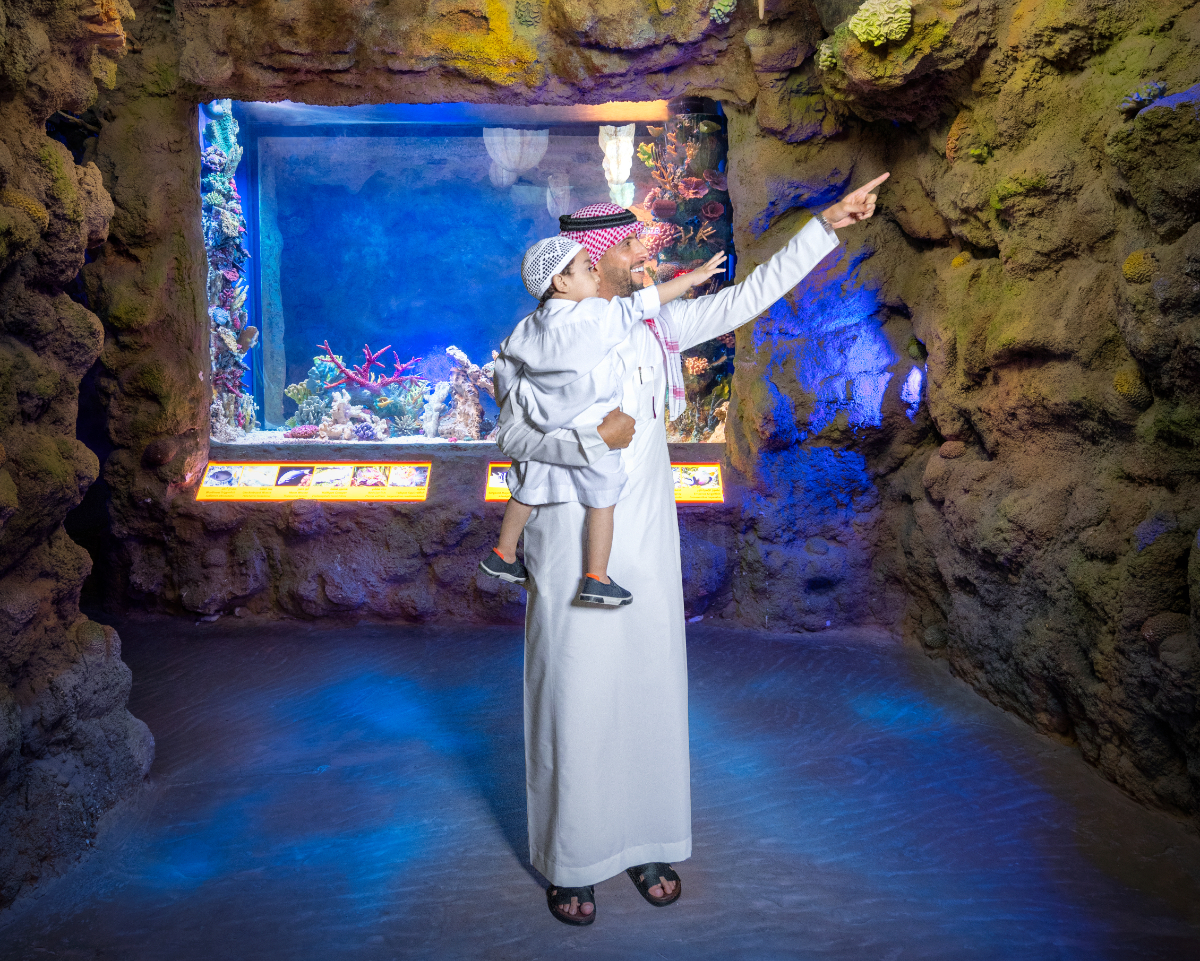
For the past six decades, the oil and energy exhibit has attracted thousands of visitors, from students to world leaders. (Instagram/Ithra)
From the start, the space catered mostly to the youth. Each year, between 30,000 and 50,000 students from local towns and villages across the Eastern Province visit as part of the site’s educational program.
Fuad Al-Therman, a senior manager with Saudi Aramco and former director of King Abdulaziz Center for World Culture, told Arab News that in the early years of the project, the visit for many students was a “transformative moment in their lives and the inspiration for what to pursue in the future.”
Some chose science and energy-related studies, becoming engineers and scientists, and subsequently making their own contributions to the growth and development of Aramco and the Kingdom, he said.
HIGHLIGHTS
• The Energy Exhibit is located on top of the Dammam field where oil was discovered in the Kingdom in 1938.
• It offers 40 informative and educational programs throughout the year.
The journey that eventually brought the exhibition to Dhahran actually began outside the Kingdom. In 1955, Aramco took part in the Saudi Pavilion in the annual Damascus International Fair, the largest trade exhibition in the Arab World at the time. The company’s display generated so much interest that it returned the following year.
Shortly after, Aramco planned a large-scale exhibition that would travel around the Kingdom as part of an outreach program. The “Mobile Oil Industry Exhibit Project” was produced in collaboration with Sheikh Abdullah Al-Tariki, who later became Saudi Arabia’s first oil minister.
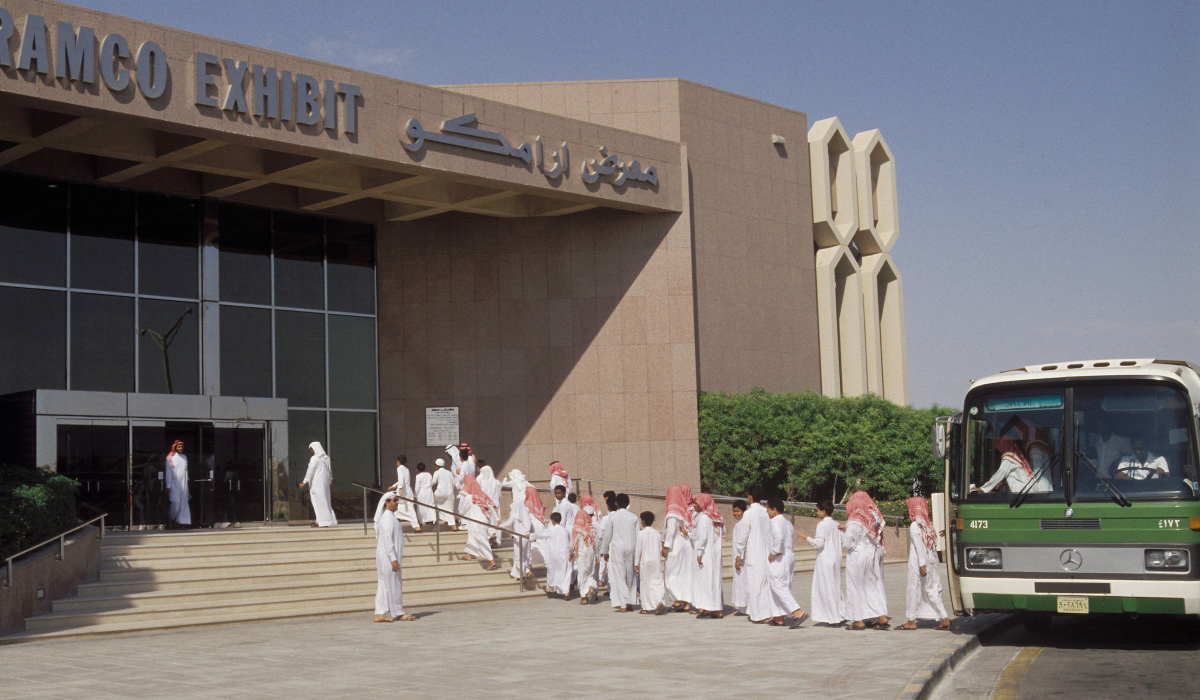
Local school children take the Aramco bus to visit the Saudi Aramco Oil Exhibit Center, October 1990. (Supplied)
The mobile exhibit was launched in Jeddah in late 1957, and for two months hosted almost 2,000 people daily from Saturday to Thursday, and 5,000 on Fridays. The exhibit went on to host 49 separate events in Saudi cities, including Makkah and Taif, with people from neighboring towns and villages traveling to witness the offerings.
For many visitors from remote parts of the Kingdom, the exhibit was the first time that they had seen a film on screen.
Given the popularity of the traveling exhibit, Aramco decided to establish a permanent facility near its headquarters in Dhahran. In 1963, Prince Abdul Mohsen bin Jalawy, acting Prince of the Eastern Region, inaugurated the “Oil Industry Exhibit.”
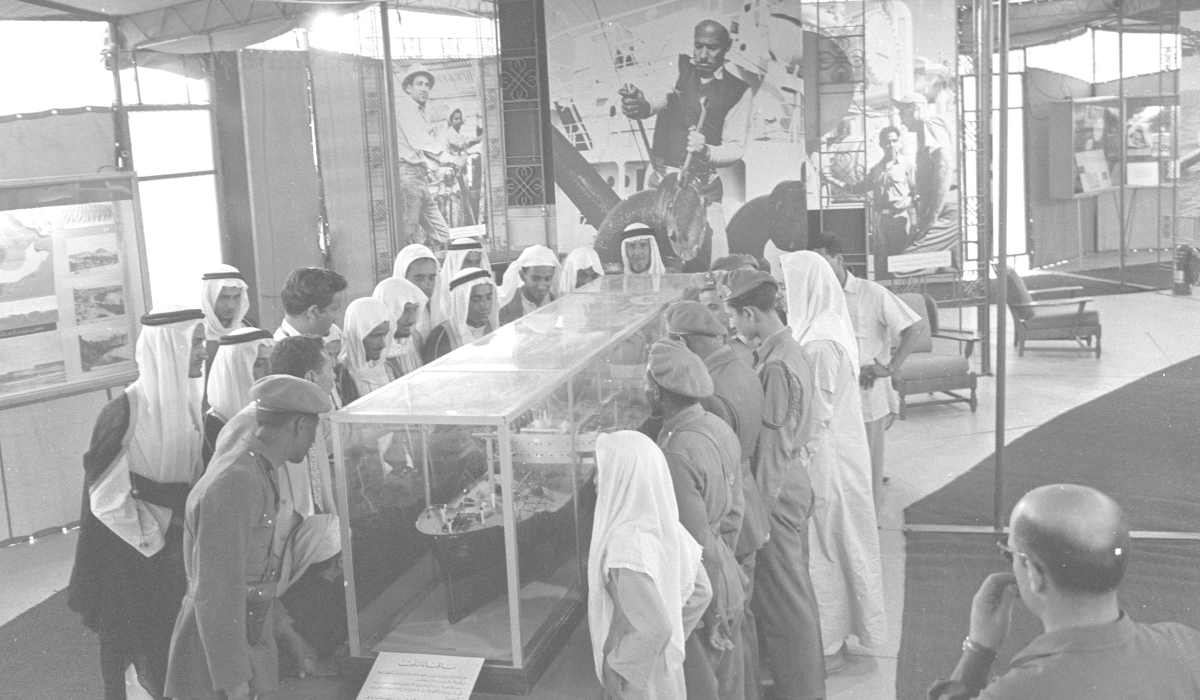
For the past six decades, the oil and energy exhibit has attracted thousands of visitors, from students to world leaders. (Instagram/Ithra)
In 1987, the space moved to its current location, with eight pavilions outlining the history of the Kingdom’s oil industry, including drilling, production and reservoir management, refineries and transport network.
The late Ismail Nawwab, Aramco’s general manager of public affairs at the time, helped transform the exhibit into an interactive educational center, shaping a new vision for the project.
With instructions in Arabic and English, interactive spaces have been inclusive and immersive from the first day. Exhibits use the latest technology to showcase the history of oil exploration, discovery and production — a journey that began with the formation of oil in shallow oceans millions of years ago.
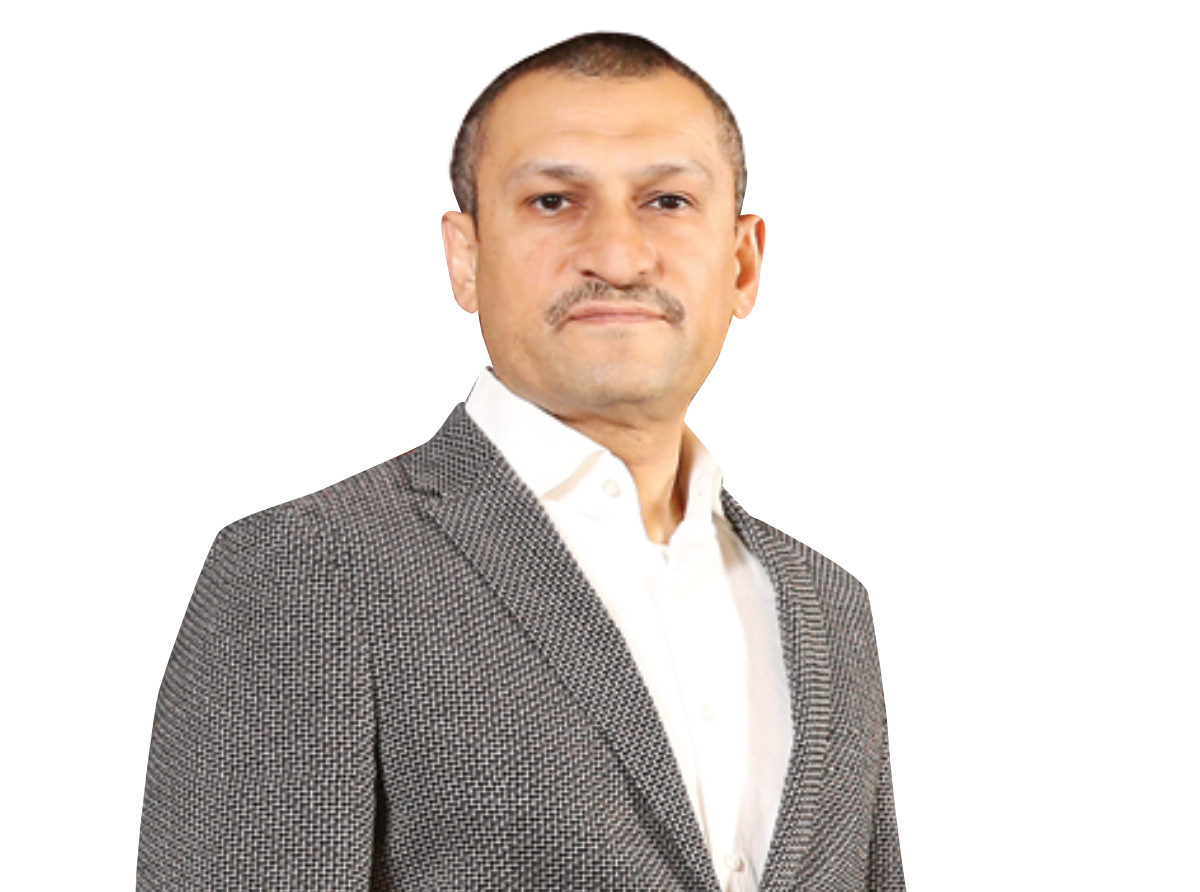
Fuad Al-Therman, Saudi Aramco senior manager
Al-Therman recalls British Prime Minister Margaret Thatcher visiting in 1991, as well as dozens of global personalities and leaders.
“The exhibit brings out the child in them; they become curious and playful, even if they are heads of states or prime ministers. It’s worth noting that the exhibition has been described as one of the best places in the world to learn about the fundamentals of the energy industry. The operating team has always been in search of new ways to excite visitors and present its content,” he said.
“I remember 20 years ago when the ‘Energy to the World’ film was introduced at the exhibition theater, using 3D film technology. Visitors were given special glasses to watch the movie. It was an exciting experience for them to see things in a way they hadn’t experienced before.”
In essence, the place where the black gold or hydrocarbon energy was produced is now a place to produce human and creative energy.
Fuad Al-Therman, Saudi Aramco senior manager
The design of the space, overseen by Saudi architect Zuhair Fayez, reflected a modern spirit that integrated Arabic and Islamic identity.
“It is a historically significant building. When the renewal project was conceived in 2008, it was given careful consideration, and efforts were made on how to modernize the facility, yet retain its defining features, thereby ensuring continuity and change within both the architecture and the upgrade project,” Al-Therman said.
One of the events still remembered by the local community was the 1997 “Dinosaur Exhibition,” which attracted more than half a million visitors during a five-week run.
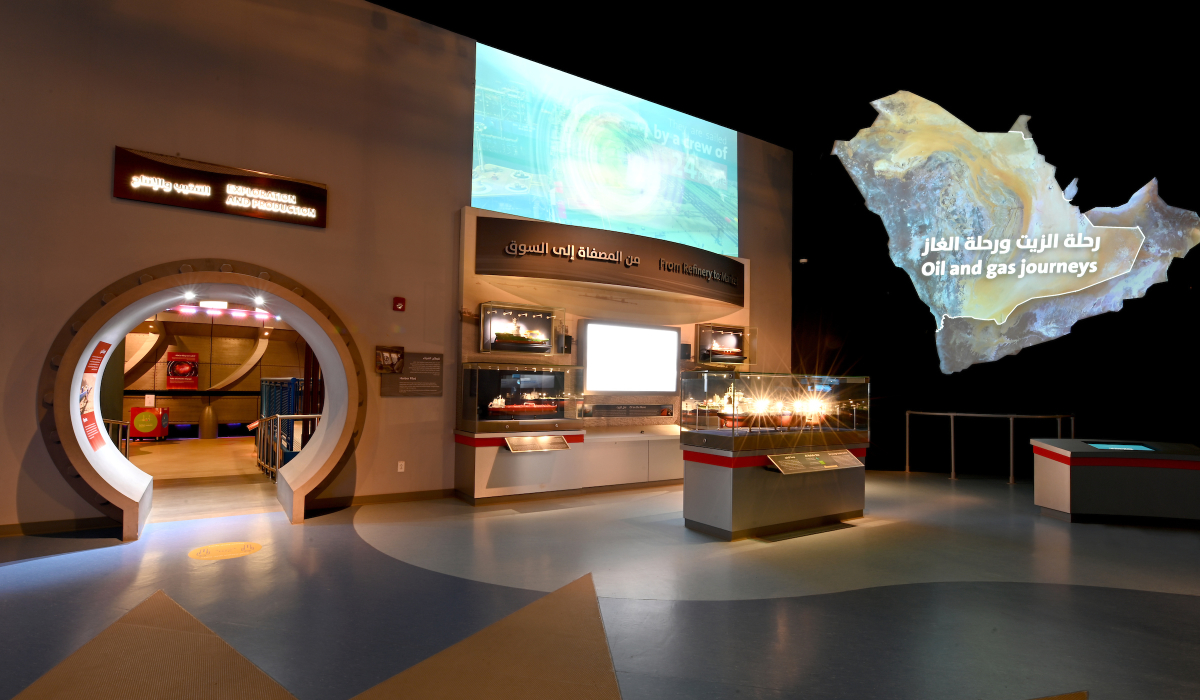
For the past six decades, the oil and energy exhibit has attracted thousands of visitors, from students to world leaders. (Supplied)
By 1999, the Aramco exhibit was drawing an average of 200,000 visitors per year with offerings that included an aquarium with colored fish and coral reefs; an elevator-like “terrascope” that simulated travel between geological layers; and a simulation of a giant oil tanker explaining shipping and unloading operations.
In 2010, the exhibition space was temporarily shuttered for renovations while Ithra was being built. The following year, the facility morphed once again, becoming a full-fledged science center focusing not only on oil and gas, but all energy.
To reflect its newfound mission, the name was changed to the Energy Exhibit.
As with Ithra, architects worked to ensure harmony with the surrounding topography. Instead of the original Oil Exhibit’s dark brown granite facade, the building’s exterior featured a lighter stone palette that matched the sand in the area. The new building opened in 2017 to coincide with the soft opening of Ithra.
Today, visitors often begin their tour in the exploration area, where they can discover how oil was formed tens of millions of years ago on the ocean floor.
In the next hall, visitors learn about oil exploration techniques. Later, a hall with a floating globe illustrates how tectonic plates moved long ago to form continents and oceans. Visitors are then transported to the modern era, where they can see the first geologists and their Saudi guides pinpointing locations to begin exploration and drilling operations.
It is a tale of the land and the people who worked it.
Visitors touring the space today can learn about oil treatment plants, refineries, gas plants, marine platforms, and the numerous petrochemical products such as plastics and textiles. Instructions are available in English and Arabic, with experts ready to answer any questions.
This year, Ithra celebrates five years since its official opening in 2018. At a recent gathering, the previous generation of leaders who worked on the various iterations of the exhibition came together to celebrate the exhibit’s 60th anniversary.
Dhahran, now an administrative center for the Saudi oil industry, is again the focus of attention.
Lujain Abahussain, manager of the Energy Exhibit, told Arab News in 2022 that she grew up in the city, went to school just a short drive away, and still takes great pride in the historic site where her office stands.
“The fascination is in the location. We are located close to Well No. 7, the Prosperity Well, which is where petroleum was discovered in Saudi Arabia for the first time back in 1938,” she said.
For Al-Therman, the Saudi Aramco senior manager, the focus is on the future.
“In essence, the place where the black gold or hydrocarbon energy was produced is now a place to produce human and creative energy,” he said.




















